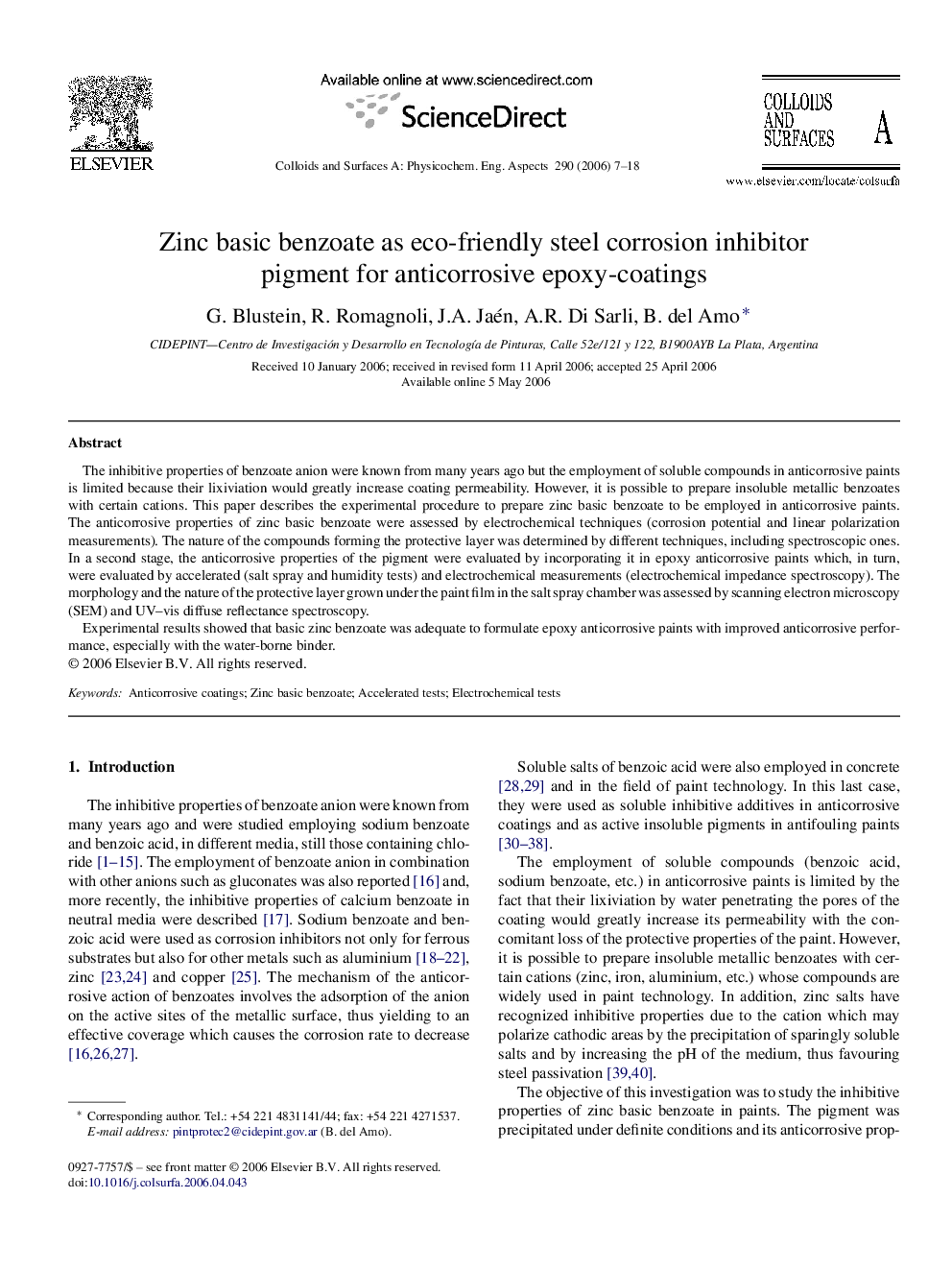| Article ID | Journal | Published Year | Pages | File Type |
|---|---|---|---|---|
| 597778 | Colloids and Surfaces A: Physicochemical and Engineering Aspects | 2006 | 12 Pages |
The inhibitive properties of benzoate anion were known from many years ago but the employment of soluble compounds in anticorrosive paints is limited because their lixiviation would greatly increase coating permeability. However, it is possible to prepare insoluble metallic benzoates with certain cations. This paper describes the experimental procedure to prepare zinc basic benzoate to be employed in anticorrosive paints. The anticorrosive properties of zinc basic benzoate were assessed by electrochemical techniques (corrosion potential and linear polarization measurements). The nature of the compounds forming the protective layer was determined by different techniques, including spectroscopic ones. In a second stage, the anticorrosive properties of the pigment were evaluated by incorporating it in epoxy anticorrosive paints which, in turn, were evaluated by accelerated (salt spray and humidity tests) and electrochemical measurements (electrochemical impedance spectroscopy). The morphology and the nature of the protective layer grown under the paint film in the salt spray chamber was assessed by scanning electron microscopy (SEM) and UV–vis diffuse reflectance spectroscopy.Experimental results showed that basic zinc benzoate was adequate to formulate epoxy anticorrosive paints with improved anticorrosive performance, especially with the water-borne binder.
